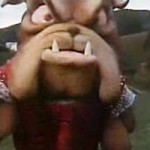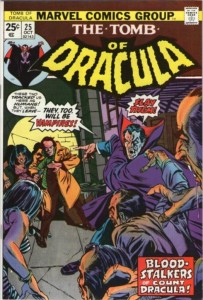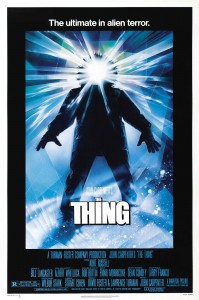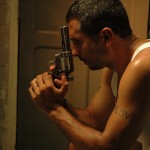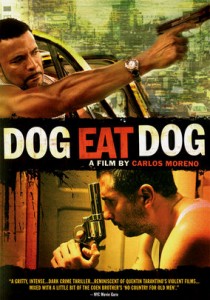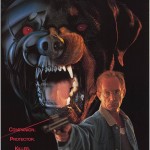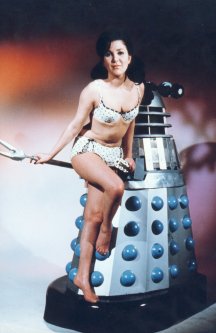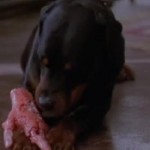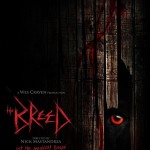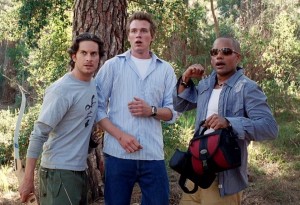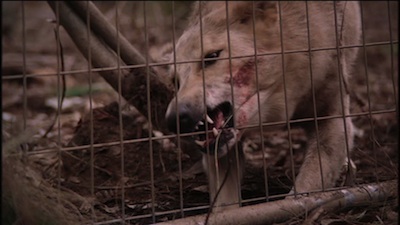
Lucky is the Barrys’ new family dog. After his predecessor Skipper is unceremoniously run down by a big black station wagon, a creepy old produce merchant rolls up and just happens to have a litter of pups in the back. All of the Barrys were predictably distraught, but none more than Bonnie (Kim Richards long before she became a Real Housewife of Beverly Hills), who has had her tenth birthday party absolutely ruined.
But once Bonnie holds lil’ Lucky in her arms, she can’t resist. He becomes a welcome addition to the family, but not everyone’s convinced. As their housekeeper Maria (Tina Menard) tries to explain, “I don’t know what it is. It’s like a cheell. He gives me a scary feeling all over. Please, Señor Barry, get another cute puppy before the kids get too much attached to heem.”
Of course, Señor Barry (a delightfully deadpan Richard Crenna) don’t cotton to Maria’s Old World superstitions. At least not until a year later, when Lucky tries to hypno-hump him into sticking his hand into a spinning lawn mower blade.
Next thing you know, the kids are painting with blood, the dog is slowly chasing the missus (Yvette Mimieux) through the house until she turns into a skinny-dipping seductress, you’re hanging out in New Age bookstores with old ladies in Snuggies, and all hell is literally breaking loose. Before you know it, you’ll all be listening to KISS and playing Dungeons & Dragons.
Such is the premise of Devil Dog: The Hound of Hell (1978) a made-for-TV supernatural chiller that aired on CBS Halloween Night some 34 years ago (damn, I feel old).
Lucky, as it turns out, is a barghest, “a creature of another world and another time according to those who believe. It’s a demon who appears in the form of a dog. It’s a monstrous thing, a goblin dog with huge teeth and claws. Monstrous. It only appears at night. The demon dog, the black dog, the dog of darkness, sometimes he runs with backward-pointed feet. Sometimes he is ablaze. Sometimes he is headless, but even a glimpse of the beast in his true form will send a man to a hell.”
Even with all of his infernal machinations, Lucky is still helpless to resist chasing a frisbee. Strangely enough, that ISN’T the weakness Mike Barry exploits to defeat this corruptor of his suburban paradise. No, instead he’s got to go to Ecuador like a true Lovecraftian protagonist and get his research on, talk to an old dude in a cave (Victory Jory), that sort of thing.
But hey, don’t let me spoiler the whole amazing odyssey for you. Check it out on your own. A little taste lies below.
Moses Gunn from Homicide: Life on the Street still takes the crown.
I’ve always had a soft spot for the creepy riff that is repeated ad nauseam in this film. You only get a taste of it in the trailer. Wee-oo wee-oo waaaah! It reminds me of Kolchak: The Night Stalker, another ’70s fave, but apparently it’s the work of Artie Kane (Eyes of Laura Mars).
Director Curtis Harrington hated this movie due to the constraints of its low budget, but I have more than a little nostalgia for it despite all its hokiness. There are plenty of instances where sound and photography make something out of nothing. The scene where housewife Betty is alone with the dog and a series of unnerving noises is a decent precursor to such frugal fare as Paranormal Activity and its ilk.
Please join us for the rest of these infamous “Dog Days of Summer” as we count down
“A Dozen Diabolical Dogs”.



